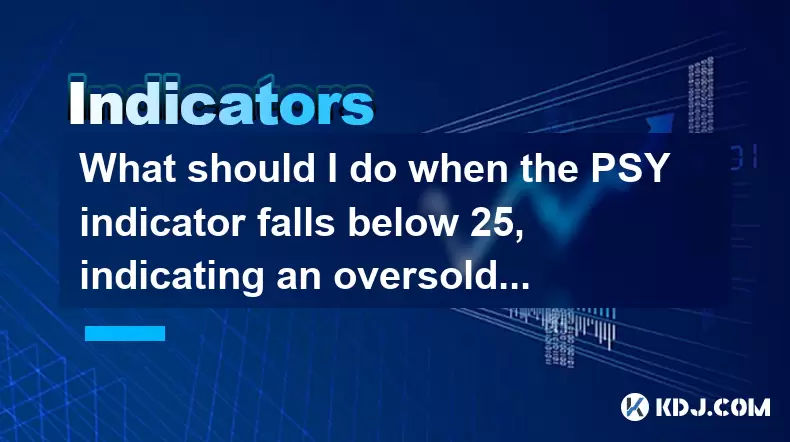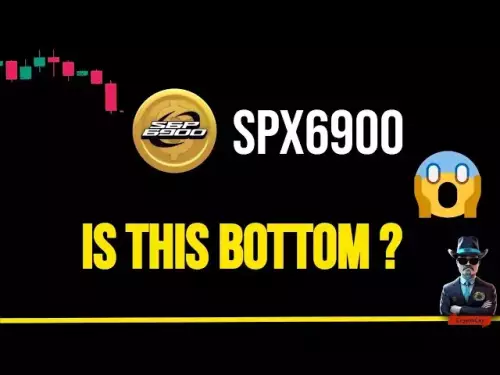-
 Bitcoin
Bitcoin $113100
-1.74% -
 Ethereum
Ethereum $4800
1.16% -
 XRP
XRP $3.041
0.36% -
 Tether USDt
Tether USDt $0.9999
0.02% -
 BNB
BNB $876.6
-0.40% -
 Solana
Solana $205.1
0.96% -
 USDC
USDC $0.0000
0.00% -
 Dogecoin
Dogecoin $0.2345
-0.10% -
 TRON
TRON $0.3629
0.40% -
 Cardano
Cardano $0.9260
1.91% -
 Chainlink
Chainlink $26.20
0.28% -
 Hyperliquid
Hyperliquid $46.04
2.89% -
 Sui
Sui $3.722
0.22% -
 Stellar
Stellar $0.4113
-0.53% -
 Ethena USDe
Ethena USDe $1.000
0.03% -
 Bitcoin Cash
Bitcoin Cash $590.3
0.39% -
 Avalanche
Avalanche $25.82
-0.01% -
 Hedera
Hedera $0.2504
-0.92% -
 Litecoin
Litecoin $119.1
-1.33% -
 UNUS SED LEO
UNUS SED LEO $9.598
0.03% -
 Toncoin
Toncoin $3.315
-1.69% -
 Shiba Inu
Shiba Inu $0.00001308
-1.02% -
 Uniswap
Uniswap $11.06
-2.10% -
 Polkadot
Polkadot $4.149
-1.10% -
 Dai
Dai $1.000
0.03% -
 Aave
Aave $350.7
-1.07% -
 Cronos
Cronos $0.1587
0.97% -
 Bitget Token
Bitget Token $4.664
-0.71% -
 Monero
Monero $274.5
3.42% -
 Ethena
Ethena $0.7021
-4.70%
What should I do when the PSY indicator falls below 25, indicating an oversold zone?
When the PSY indicator drops below 25, it signals oversold conditions and potential bullish reversal, but confirm with price action, volume, and other indicators to avoid false signals.
Aug 11, 2025 at 03:57 am

Understanding the PSY Indicator and Its Significance
The PSY (Psychological Line) indicator is a momentum oscillator used in technical analysis to measure the market sentiment based on the number of rising days over a specified period. It is calculated by dividing the number of trading days when the closing price increased by the total number of days in the observation period, typically 12 or 24 days, and then multiplying by 100. The resulting value ranges from 0 to 100. When the PSY indicator falls below 25, it signals that the market is in an oversold zone, indicating that a large majority of recent trading sessions have ended with price declines. This may reflect excessive pessimism among traders, potentially setting the stage for a reversal.
The psychological underpinning of the PSY indicator is rooted in behavioral finance. Sustained downward price action often leads to fear-driven selling, which can push the PSY into low territory. When the value drops beneath 25, it suggests that buyers may have been absent for too long, increasing the probability of a corrective bounce. However, this signal should not be interpreted in isolation. It must be analyzed alongside price action, volume, and other technical indicators to avoid false signals.
Confirming the Oversold Signal with Price Action
Before taking any action when the PSY indicator falls below 25, it is essential to assess the current price structure. Look for signs of potential exhaustion in the downtrend. These include:
- Long lower wicks on candlesticks, indicating rejection of lower prices
- Bullish engulfing patterns or morning star formations near key support levels
- Decreasing trading volume during down moves, suggesting weakening selling pressure
For example, if Bitcoin has been declining for several days and the PSY drops to 22, but the latest candle shows a strong reversal with a close near the high and above the 20-period moving average, this strengthens the case for a rebound. Conversely, if the price continues to make lower lows on high volume, the oversold condition might persist, and entering a long position could be premature.
Using Additional Indicators to Validate the Signal
Relying solely on the PSY indicator can lead to misleading conclusions. It is crucial to cross-verify the oversold signal with complementary tools. Consider integrating the following:
- RSI (Relative Strength Index): If RSI is also below 30 and begins to turn upward, it reinforces the oversold condition
- MACD (Moving Average Convergence Divergence): A bullish crossover in the MACD histogram can confirm momentum shift
- Volume Oscillator: Increasing volume on up candles after a prolonged decline supports buying interest
For instance, if Ethereum’s PSY drops to 23 and simultaneously the RSI forms a bullish divergence (price makes a lower low while RSI makes a higher low), the likelihood of a reversal increases. Traders can use such confluence to build higher-confidence setups.
Executing a Trade Based on PSY Oversold Conditions
When the PSY falls below 25 and supporting evidence aligns, a trader may consider entering a long position. The process should follow a structured approach:
- Identify a precise entry point: Wait for a bullish confirmation candle to close above the prior candle’s high
- Set a stop-loss: Place it below the most recent swing low to limit downside risk
- Determine a take-profit level: Use recent resistance zones, Fibonacci extensions, or a risk-reward ratio of at least 1:2
- Adjust position size: Ensure the trade adheres to your risk management rules, typically risking no more than 1–2% of capital
Suppose the PSY for Solana drops to 24, and the price forms a hammer candle at a historical support level of $85. A trader could enter at $86.50 (above the hammer’s high), set a stop-loss at $84.50, and target $92 based on the nearest resistance. This setup balances opportunity and risk.
Monitoring Market Context and Avoiding False Signals
Even when the PSY indicator is below 25, external factors can invalidate the expected rebound. Bear markets or strong negative news in the crypto space can keep assets oversold for extended periods. For example, during a major regulatory crackdown, Bitcoin might remain in PSY oversold territory for over a week while the price continues to drop. In such scenarios, the indicator reflects persistent fear rather than imminent reversal.
To mitigate this risk:
- Check macroeconomic news related to crypto regulations, exchange outages, or macro trends
- Review on-chain data: Metrics like exchange outflows or rising active addresses may support a bullish case
- Observe broader market correlation: If most major cryptocurrencies are declining, a single asset’s oversold signal may lack strength
A PSY reading below 25 in Dogecoin during a broad market sell-off may not be actionable unless other altcoins also show signs of stabilization.
Common Misconceptions About the PSY Indicator
Many traders assume that an oversold PSY automatically means "buy now." This is a flawed interpretation. The PSY below 25 does not guarantee a reversal—it only indicates extreme bearish sentiment. Markets can remain oversold during strong downtrends. Another misconception is that the PSY works equally well across all timeframes. On lower timeframes like 15-minute charts, the indicator can generate frequent false signals due to noise. It performs more reliably on daily or 4-hour charts where sentiment trends are clearer.
Additionally, some traders overlook the importance of the lookback period. A 12-day PSY reacts faster than a 24-day version. Adjusting the period based on volatility and trading style can improve accuracy. For swing traders, a 24-day PSY may offer more reliable signals than a shorter window.
FAQs
What is the ideal lookback period for the PSY indicator in cryptocurrency trading?
The most commonly used periods are 12 and 24 days. A 12-day PSY is more sensitive and suitable for short-term traders, while a 24-day PSY provides smoother signals ideal for swing or position traders. The choice depends on your trading style and the volatility of the asset.
Can the PSY indicator be used for all cryptocurrencies?
Yes, the PSY indicator can be applied to any cryptocurrency with sufficient price history and trading volume. However, it may be less reliable for low-cap altcoins with erratic price movements or thin liquidity, where sentiment can shift abruptly without meaningful volume.
Should I exit a trade when the PSY rises above 25 from below?
Not necessarily. A PSY rise above 25 indicates the market is no longer oversold, but it doesn’t confirm a trend reversal or exhaustion of upside momentum. Exit decisions should be based on price action, resistance levels, and other confirming indicators rather than PSY alone.
How does the PSY indicator differ from the RSI?
The PSY indicator measures the proportion of up days over a period, focusing purely on price direction, while the RSI considers the magnitude of price changes. PSY is simpler and sentiment-focused, whereas RSI incorporates velocity and is more sensitive to large price swings.
Disclaimer:info@kdj.com
The information provided is not trading advice. kdj.com does not assume any responsibility for any investments made based on the information provided in this article. Cryptocurrencies are highly volatile and it is highly recommended that you invest with caution after thorough research!
If you believe that the content used on this website infringes your copyright, please contact us immediately (info@kdj.com) and we will delete it promptly.
- Ripple's RLUSD and Japan's Regulation: A Match Made in Digital Finance Heaven
- 2025-08-25 07:05:29
- BlockDAG's $381M Presale: Meet the Core Team Driving Its Success
- 2025-08-25 07:25:14
- Solana Price Targets $270: On-Chain Strength Fuels Bullish Momentum
- 2025-08-25 07:25:14
- Ozak AI, Binance, and Coinbase: Navigating the Crypto Landscape in 2025
- 2025-08-25 05:05:13
- Coinbase, Hacker, and Solana: Decoding the $8M Heist
- 2025-08-25 05:30:12
- Riding the Altcoin Wave: Momentum, Tech, and Wall Street's Embrace
- 2025-08-25 06:05:21
Related knowledge

What does it mean when the +DI and -DI cross frequently in the DMI indicator but the ADX is flattening?
Aug 11,2025 at 03:15am
Understanding the DMI Indicator ComponentsThe Directional Movement Index (DMI) is a technical analysis tool composed of three lines: the +DI (Positive...

What does the sudden appearance of a "dark cloud cover" candlestick pattern during an uptrend indicate?
Aug 13,2025 at 11:35am
Understanding the 'Dark Cloud Cover' Candlestick PatternThe dark cloud cover is a bearish reversal pattern in technical analysis that typically appear...

What does it mean when the moving average, MACD, and RSI all send buy signals simultaneously?
Aug 11,2025 at 01:42pm
Understanding the Convergence of Technical IndicatorsWhen the moving average, MACD, and RSI all generate buy signals at the same time, traders interpr...

What does it mean when both the KDJ indicator and the RSI show overbought signals simultaneously?
Aug 13,2025 at 11:35am
Understanding the KDJ Indicator in Cryptocurrency TradingThe KDJ indicator is a momentum oscillator derived from the Stochastic Oscillator, widely use...

What does it mean when the price is trading above the SAR indicator but the red dots are densely packed?
Aug 09,2025 at 11:49pm
Understanding the SAR Indicator and Its Visual SignalsThe SAR (Parabolic Stop and Reverse) indicator is a technical analysis tool used primarily to de...

What does it mean when the candlestick chart forms a "Morning Star" but trading volume is sluggish?
Aug 12,2025 at 06:28pm
Understanding the Morning Star Candlestick PatternThe Morning Star is a three-candle bullish reversal pattern commonly observed in cryptocurrency pric...

What does it mean when the +DI and -DI cross frequently in the DMI indicator but the ADX is flattening?
Aug 11,2025 at 03:15am
Understanding the DMI Indicator ComponentsThe Directional Movement Index (DMI) is a technical analysis tool composed of three lines: the +DI (Positive...

What does the sudden appearance of a "dark cloud cover" candlestick pattern during an uptrend indicate?
Aug 13,2025 at 11:35am
Understanding the 'Dark Cloud Cover' Candlestick PatternThe dark cloud cover is a bearish reversal pattern in technical analysis that typically appear...

What does it mean when the moving average, MACD, and RSI all send buy signals simultaneously?
Aug 11,2025 at 01:42pm
Understanding the Convergence of Technical IndicatorsWhen the moving average, MACD, and RSI all generate buy signals at the same time, traders interpr...

What does it mean when both the KDJ indicator and the RSI show overbought signals simultaneously?
Aug 13,2025 at 11:35am
Understanding the KDJ Indicator in Cryptocurrency TradingThe KDJ indicator is a momentum oscillator derived from the Stochastic Oscillator, widely use...

What does it mean when the price is trading above the SAR indicator but the red dots are densely packed?
Aug 09,2025 at 11:49pm
Understanding the SAR Indicator and Its Visual SignalsThe SAR (Parabolic Stop and Reverse) indicator is a technical analysis tool used primarily to de...

What does it mean when the candlestick chart forms a "Morning Star" but trading volume is sluggish?
Aug 12,2025 at 06:28pm
Understanding the Morning Star Candlestick PatternThe Morning Star is a three-candle bullish reversal pattern commonly observed in cryptocurrency pric...
See all articles

























































































